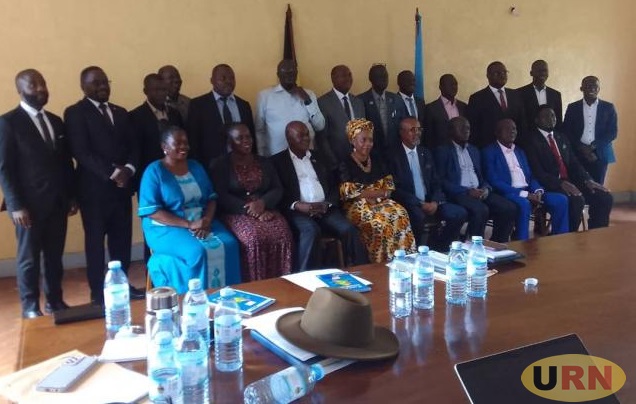
Buyende, Uganda | THE INDEPENDENT | The Ministry of Energy and Mineral Development (MEMD) has announced plans to relocate thousands of residents from seven villages in Kidera Sub-county, Buyende District, to pave the way for Uganda’s first nuclear power plant. The 30-square-kilometre facility is projected to generate 8,400 megawatts of electricity, marking a significant milestone in the country’s energy ambitions. The affected villages include Kiwogoire, Kiyinga, Nawasaso, Kasato, Kyankole, Buyanja A, and Buyanja B.
During a stakeholder meeting at the Busoga Kingdom headquarters in Jinja on Monday, November 18, 2024, MEMD officials revealed that the project is in its final stages, with a consultant already procured and relocation plans underway. According to the 2nd Prime Minister, Alhajj Ahmed Osman Noor, the project will strengthen the relationship between the Buyende community and the kingdom, as the Obwa Kyabazinga has long supported government programs.
He urged the government to enhance environmental protection laws and stressed the importance of fair and transparent compensation for affected communities, particularly those living in parks and surrounding areas. Osman described the nuclear project as an opportunity for both economic and social transformation and pledged that the kingdom is willing to provide land for its development. He also called for scholarships for youth to study nuclear physics and related fields, ensuring Uganda’s long-term development in the energy sector.
Osman encouraged the community to embrace the project and collaborate with MEMD to ensure it leads to both community development and socioeconomic transformation. Sabiti Baguma, the Acting Assistant Commissioner for Nuclear Science and Applications at MEMD, explained that Buyende was chosen as the site after careful evaluation of factors like water availability, location, stability, and population.
He highlighted that the nuclear power plant is expected to produce 4,800 megawatts of electricity as part of Uganda’s energy vision for 2040, contributing to a more stable electricity supply both locally and regionally. Baguma emphasized that the government is diversifying its energy sources, referencing the 2005 drought that caused power instability in Uganda. The nuclear plant is expected to help mitigate such challenges in the future.
Since 2016, the government has been conducting studies and engaging with local governments and communities. Baguma noted that Buyende was selected as the first site out of six planned nuclear projects. Abo Damali Noel Ofumbi, Senior Energy Officer in the Nuclear Power Infrastructure Department at MEMD, explained that the Atomic Energy Act of 2008 will regulate and strengthen the development of Uganda’s nuclear industry.
She outlined several proposed nuclear power projects, including the 8,400 MWe Buyende Nuclear Power Plant, the 7,200 MWe Nakasogola Plant, the 4,800 MWe Kiruhura Power Plant, and the Lamwo Plant. Ofumbi stated that the Buyende plant is expected to be operational by 2031. The project will also involve significant infrastructure developments, such as electricity transmission lines, new access roads (including Jinja Port-Mbulamuti, Kamuli-Bukhugu, and Iganga-Kiyunga-Kamuli roads), a community development action plan, and the construction of a skills development center.
Key stakeholders include MEMD, UETCL, NEMA, the Ministry of Finance, the Ministry of Water and Environment, Ministry of Works and Transport, Buyende Local Government, Busoga Kingdom, and various regulatory bodies such as the Atomic Energy Council and NEMA. The Speaker of the Busoga Lukiiko, George Mutyabule, urged the government to ensure that compensation and resettlement for affected communities are completed before the project begins. He emphasized the importance of addressing the needs of those living in road reserves to avoid any inconvenience.
Jinja City Resident City Commissioner, Gulume Balyaino, stated that once the project is operational, it will improve energy efficiency and contribute to environmental conservation. As a representative of the government, he promised to encourage the community to embrace nuclear energy, highlighting its potential to stabilize the power supply and improve the quality of life and development in the region.
*****
URN
 The Independent Uganda: You get the Truth we Pay the Price
The Independent Uganda: You get the Truth we Pay the Price


